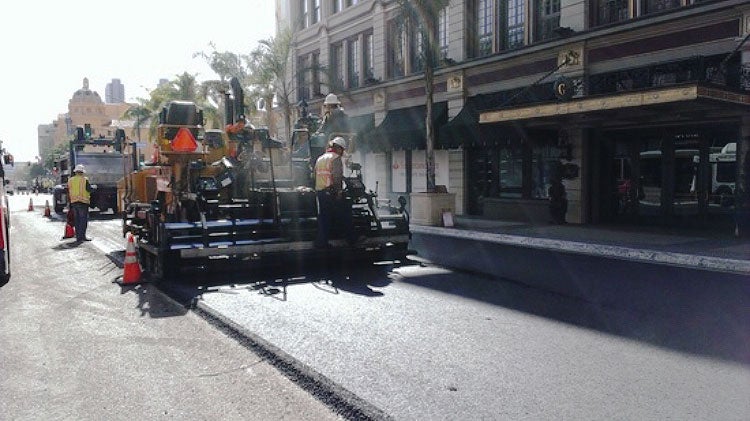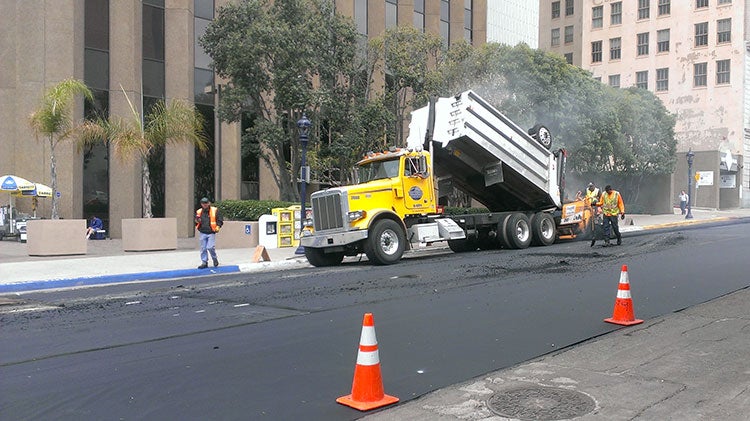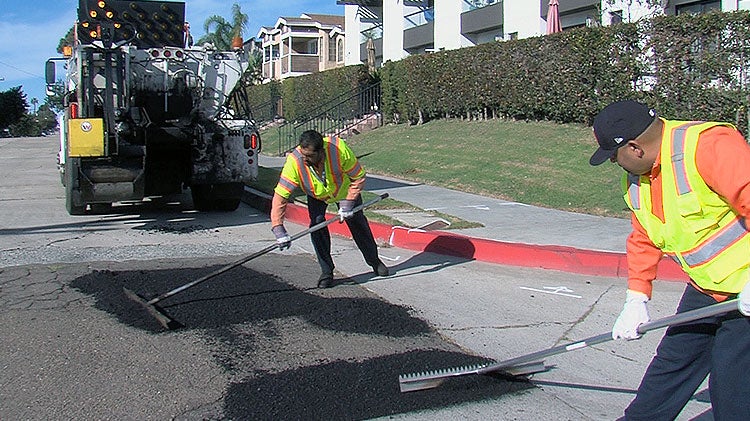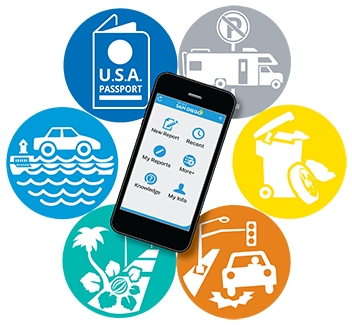Street Resurfacing and Pothole Repair
Learn more about streets in your neighborhood and how the City maintains its network of 2,800 miles of streets.
What types of street repair exist?
Resurfacing
Asphalt Overlay
Asphalt overlay consists of installing a new layer of asphalt on top of the existing street surface at a thickness of 1 to 3 inches. Streets are ground down (milled) before resurfacing so asphalt will not build up at the edge of the gutter.
For more information on current asphalt overlay projects, visit the Capital Improvements Program Project Information page.

Slurry Seal
Slurry seal is a pavement preservation method consisting of asphalt emulsion, sand, and rock. This is applied to the street surface at an average thickness of ¼ of an inch. This cost-effective maintenance treatment extends the life of streets that are already in good condition. The slurry seal provides a durable surface and addresses existing surface distress on streets.
How is resurfacing scheduled?
A pavement management system, used to analyze data, helps determine when to schedule streets for resurfacing. Each street segment is assigned an "Pavement Condition Index" (PCI) based on the pavement's roughness and cracks. To prioritize street paving, the PCI is used in conjunction with other factors, such as traffic volume, road type, maintenance history, other construction projects and available funding. Repairs are often grouped within a neighborhood to include streets that are in similar condition or performed after other projects, such as pipeline replacement.
When will my street be repaved?
Streets.sandiego.gov shows street paving projects that have been completed, are in progress, or are planned.
What if my street isn't on the list?
Reports of potholes are welcome. However, there’s no need to report a street needing resurfacing. Pavement surveys are conducted regularly, and this data is used to determine when streets will be repaired. Utilizing a street’s overall condition assessment, streets are planned for repaving work based on available funding and other factors such as traffic volume, road type, maintenance history, and other planned construction projects.
Pothole Repair
Potholes are small bowl-shaped depressions in the pavement surface. They generally have sharp edges and vertical sides near the top of the hole.
Potholes are created in many ways. The most common way is when water seeps into cracks in the road's surface. When combined with the vibration of the tires over the cracks, this can cause the asphalt to fail. That is why there can be more potholes after it rains.
Vehicular traffic can cause the subsurface materials to move, generating a weak spot under the street. Every time a vehicle travels over it, the damage grows until a new pothole is formed.
The City repairs more than 40,000 potholes annually using materials such as a hot patch compound and bagged asphalt.
Learn more
View construction projects in your neighborhood
Safe roads for all modes
Report Other Issues
- Branch/tree down
- Visibility of traffic signs/signals
- Blocking street/sidewalk
- Dead/unstable
- Other




